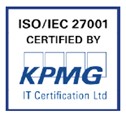What Are the Most Common Topics in Market Court Cases in Finland? Part 1
6 April 2021
Authors: Eeva Tiainen, Outi Jousi and Jesper Nevalainen
When a company is not satisfied with a public sector tendering competition or its outcome, it is possible for the company to appeal to the Market Court. The Market Court may, inter alia, oblige the contracting entity to re-tender or correct a flawed evaluation of tenders. In this three-part blog series, we go through the most typical topics that are appealed to the Market Court. What types of matters do the appeals usually concern, how can contracting entities and tenderers seek to avoid a process in the Market Court, and what type of case law has been made public on this issue recently?
The number of public procurement appeals in Finland has reduced steadily in recent years but is still relatively high. The most recent statistics of the Market Court are from 2019, when it received 308 procurement cases. There are many grounds for an appeal, but year after year, certain topics seem to appear more frequently than others — so which topics are most often appealed to the Market Court?
We examined the public procurement cases published by the Market Court between 2017 and 2020 and found that the clear TOP 3 of the most popular topics is as follows:
- Tender’s compliance with the invitation to tender
- Unclear invitation to tender
- Tenderer’s suitability
In this part of our blog series, we address the most common one of these, i.e. a tender’s compliance with the invitation to tender.
Appeals That Concern a Tender’s Compliance with the Invitation to Tender
The cases under this topic of appeal fall, in practice, into two categories:
- cases where the appellant’s tender has been excluded from a tendering competition due to its non-compliance with the invitation to tender; and
- cases where the winner’s tender perhaps should have been excluded from a tendering competition due to its non-compliance with the invitation to tender.
Public procurement tenders are, in principle, final. The contracting entity, i.e. the state, a municipality, or a company owned by either, may request clarifications to tenders only to a very limited extent. In public procurement, it is therefore of the utmost importance to prepare the tender carefully, as there will usually be no possibility to correct the tender afterwards. On the other hand, the submission of tenders that are in line with the invitation to tender and comparable with each other requires clarity and unambiguity of the invitation to tender. Tenders cannot be compared with one another if the invitation to tender has been unclear. The contracting entity may not exclude a tender from the tendering competition due to its non-compliance with the invitation to tender if the non-compliance is due to the ambiguity of the invitation to tender, in which case a new tendering competition should be organised.
In case MAO:49/21, the contracting entity had excluded the appellant’s tender from the tendering competition, as the swing barrier gate (i.e. boom barrier) offered by the appellant was not self-closing and its open structure did not enable all work machines to pass smoothly. The Market Court stated that the invitation to tender did not, however, set out requirements for these criteria and that, for example, the requirement for automatic closing of the boom barrier could not be traced from the fact that the model of the boom barrier was declared to be a swing barrier gate. The Market Court found that the contracting entity had not defined the requirements of the subject of the procurement in a sufficiently precise and transparent manner. The contracting entity should not have excluded the appellant’s tender by pleading that requirements not even indicated in the invitation to tender had not been met.
Both contracting entities and tenderers should bear in mind that it is the tenderer’s responsibility to make sure that a tender is compliant with the invitation to tender. Contracting entities do not only have a right but also an obligation to exclude a tender that is non-compliant with the invitation to tender, if the non-compliance compromises the equal and non-discriminatory treatment of the tenderers. This sets a duty of care for the tenderer: every question must be answered as required and all the documents must be uploaded to the tender portal by the deadline.
A good practical example is the recent case MAO:553/20, in which the contracting entity had excluded the appellant’s tender from the tendering competition due to its non-compliance with the invitation tender, since the tender was missing a plan required in the invitation to tender. According to the appellant, the plan had not been uploaded due to an upload error and it was impossible to make sure whether the attachment had been delivered, as no delivery confirmation was sent by the project bank. The Market Court found that the appellant’s tender was non-compliant with the unconditional and clear requirements set out in the invitation to tender. According to the Market Court, the appellant would have been able, regardless of the delivery confirmation, to check whether the attachment had been delivered successfully. The contracting entity had not acted erroneously when excluding the tender from the tendering competition.
How to Avoid Appeals Regarding a Tender’s Compliance with the Invitation to Tender
Our tips for contracting entities: Make sure that the invitation to tender contains all necessary requirements concerning the subject of the procurement and that the requirements are unambiguous. Try to make it as simple as possible for the tenderers to draw up a tender — if the invitation to tender is very complex and drawing up a tender burdensome, mistakes in the tenders are more likely. The tenderers may be assisted, for example, by chopping long requirements into smaller pieces in order to make sure that the tenderers surely notice to provide descriptions regarding all requested matters.
Our tips for tenderers: Make sure that you have answered all of the contracting entity’s questions and that the answers are provided in the exact form required by the invitation to tender. When drawing up your answers, chop the questions into smaller pieces when necessary, in order to make sure that the tender includes all the required answers. Where necessary, ask a third party to check your tender to eliminate mistakes and to maximise your points.
In the next part of our blog series, we will address appeals regarding an unclear invitation to tender. If you have any questions relating to the subject of this blog series, please do not hesitate to get in touch with us.








